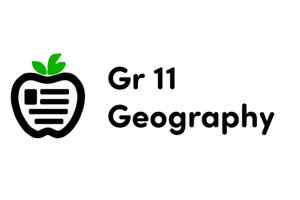Podcast
Questions and Answers
What does the concept of 'Spatial Data' refer to?
What does the concept of 'Spatial Data' refer to?
- Methods of representing geographic information
- GIS approaches and their applications
- Attributes and characteristics of geographical features
- Relative locations of natural and man-made features (correct)
Which of the following is an example of an 'Attribute'?
Which of the following is an example of an 'Attribute'?
- Name of a lake
- Location of a building
- Boundary of a city
- Population of a country (correct)
What is the 'Multi-layer Cake' method used for?
What is the 'Multi-layer Cake' method used for?
- Storing geographic data in a database
- Analyzing geographical data using GIS
- Representing geographic information in a single layer
- Describing and representing a geographic information system (correct)
What is the primary focus of the 'Application Approach' in GIS?
What is the primary focus of the 'Application Approach' in GIS?
What type of data might a GIS platform incorporate to determine a suitable location for a supermarket?
What type of data might a GIS platform incorporate to determine a suitable location for a supermarket?
What is the primary goal of a suitability study in GIS?
What is the primary goal of a suitability study in GIS?
What is the primary concern of GIS?
What is the primary concern of GIS?
What do mental maps demonstrate about a person?
What do mental maps demonstrate about a person?
What is the purpose of clarifying and dividing questions into manageable chunks when utilizing a GIS?
What is the purpose of clarifying and dividing questions into manageable chunks when utilizing a GIS?
What is the abstract concept that is typically discussed rather than measured in GIS?
What is the abstract concept that is typically discussed rather than measured in GIS?
What are the three types of knowledge that people often rely on when traveling through space?
What are the three types of knowledge that people often rely on when traveling through space?
What is a common component of all GIS software?
What is a common component of all GIS software?
Flashcards are hidden until you start studying
Study Notes
Geographical Information Systems (GIS)
- GIS is a tool for comprehending and relating to the "what," "when," "how," and "why" of the world by answering "where."
- GIS is primarily concerned with geography and learning about the world in which we live.
Mental Maps
- Mental Maps are stored, brain-based representations of the environment for our world.
- They demonstrate familiarity with our neighborhood and relationship with our local surroundings.
- Humans prefer to think spatially according to their preferences.
Asking Geographic Questions
- Clarifying and dividing questions into manageable chunks are extremely useful skills when utilizing a geographic information system.
- Question types include:
- Geographic Location
- Geographic Distribution
- Geographic Association
- Geographic Interaction
- Geographic Change
- Geographic Concepts
Geographic Concepts
- Location: a point on the Earth's surface, can be referenced using Latitude and Longitude, Geographic Names Information System (GNIS), and Geo-Coding.
- Direction: the location of an object relative to other objects along a line, can be Egocentric, Landmark, True North, Magnetic North, and Grid North.
- Distance: the degree of separation between two locations, can be measured in Nominal, Absolute units, and other units.
- Space: an abstract concept that is typically discussed rather than measured, including Topological space.
- Navigation: movement and travel with a specific destination, often relying on Landmark, Route, and Survey knowledge.
GIS for Today and Beyond
- A GIS is a specialized computer application that stores, modifies, processes, and displays geographic data and information as maps.
- Examples of GIS software include ESRI ArcGIS, Pitney MapInfo, and Open Source GRASS.
- All GIS software consists of a database management system capable of managing and integrating spatial and attribute data.
Spatial Data and Attributes
- Spatial Data: facts regarding the location and position of phenomena on the Earth's surface, such as Streets, Buildings, Lakes, and Countries.
- Attributes: characteristics and qualities of features and occurrences located on the Earth's surface, such as Name, Street No., Depth, and Population.
GIS Approaches
- Application Approach: focuses on the use and application of GISs to address problems, such as answering questions, aiding decision-making, and producing maps.
- Developer Approach: focuses on the development and creation of GIS systems, including designing and building spatial databases and applications.
Multi-layer Cake
- A classic method to describe and represent a geographic information system, where each layer of the cake reflects a distinct geographical topic.
Studying That Suits You
Use AI to generate personalized quizzes and flashcards to suit your learning preferences.




